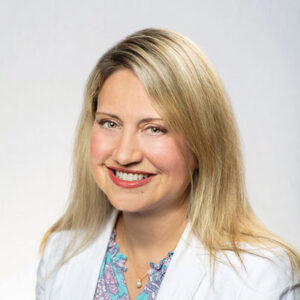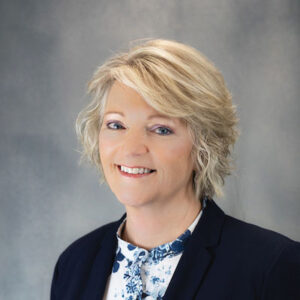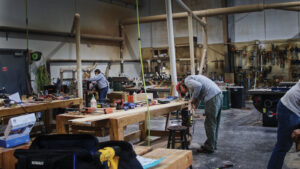School district avoids teacher shortage woes that others are facing.
Education is about people, and for Columbia Public Schools, the fifth largest school district in the state of Missouri, the number of people who help educate the approximately 18,800 students in pre-kindergarten through high school is large.
With nearly 3,000 certified teachers, classroom support, operations, and administrative staff in 21 elementary schools, seven middle schools, four high schools, an early childhood education program, and the Columbia Area Career Center, the district is fortunate to have escaped the teacher shortages that many other districts around the country have experienced.

“Schools are a reflection of their community,” says Michelle Baumstark, chief communications officer for Columbia Public Schools. “Columbia Public Schools is a reflection of the Columbia community. When attracting people to come to Columbia Public Schools and Columbia, the quality of the community is a big selling point.”
Each year, the district hires around 200 new teachers, which is a standard trend for same-sized districts around the country. During the spring and summer months, Baumstark says the district hires every day. Some open positions, however, have proven harder to fill, a reality that the district acknowledges, and is addressing.
“We do have challenges filling harder-to-find positions, such as specialty areas like foreign languages and many of our critical hourly positions including classroom aides, paraprofessionals, custodial, and nutrition services,” Baumstark explains. “We’ve set some goals related to continued recruitment and retention of employees as part of the district’s new five-year strategic plan. We’ve also implemented some unique strategies to fill some of our harder-to-fill positions. The Board of Education has also invested in the improvement of hourly wages for harder-to-fill positions, including paraprofessionals, and increases to the salaries for teachers and employees on salary schedules.”

Making CPS Attractive to Teachers
Public school districts, by law, are not able to offer bonuses or monetary incentives, but CPS seeks to remain attractive by providing competitive salaries and wages, creating positive environments, and offering high-quality professional development opportunities and opportunities for advancement.
“In CPS, we also provide a lot of resources and staffing to support our employees,” Baumstark says. Where other districts may choose to forgo filling or creating needed support positions to help teachers and students excel in the classroom, she says CPS “has chosen to invest in providing those resource positions,” adding, “Again, the district is about people.”
Close to 80 percent of CPS’ budget is for people, and certified employees in CPS, like other districts, are paid based on established salary schedules. In 2023, the newly legislated state minimum is $38,000, but Baumstark says first-year CPS teachers earn more than the base salary set by the state and many other districts across the state.
A first-year teacher in CPS starts at $40,900, she says, noting that each year teachers and others move up on the salary schedule based on another year of experience, and they also move if they achieve additional levels of education. The budget for the 2023-24 school year includes an additional investment of $6.43 million for increases in compensation for all employee groups.
Teachers received an average increase of 3.46 percent, not including educational credit earned. The remaining amount is divided among 26 additional employee groups that include both salaried and hourly staff across the district.
In addition to competitive pay, CPS also offers a comprehensive benefits package. Medical, dental, and life insurance premiums are 100 percent paid by the district for employees working 35 hours or more per week, Baumstark says. The district also offers coverage for dependents and voluntary enrollment plans like vision and disability with premiums paid by the employee.
Hourly Positions Remain Challenging
Employers across the community were challenged to fill hourly positions before COVID, and the challenge has become even greater in the post-pandemic era. Like other employers in the community, CPS continues to struggle as it seeks to hire hourly nutrition services, custodial, and facilities staff, Baumstark adds.
Bus drivers are also in demand. In addition to hiring drivers to transport students to and from school as required by law, drivers are also necessary for field trips, athletics, and other activities for students. CPS contracts with Student Transportation of America for drivers, and Baumstark says STA faces a significant shortage of drivers in Columbia and across the country.
She says Student Transportation of America has also increased wages and offers training and flexibility. Starting pay is $22 per hour “and many drivers earn more,” she says. The nature of the position means that STA, even pre-COVID, is always hiring.
The district also contracts with EduStaff for substitute teachers, and similar to STA, Baumstark says EduStaff is continuously hiring and working with individuals to get them sub-certified.
The Missouri Department of Elementary and Secondary Education (DESE) has provided some relief in the certification processes to help school districts and staffing companies be able to increase the substitute pools more easily, Baumstark says. Most recently, an initiative by the state to allow retirees to come back and substitute was put into place.
“Previously, retirement system rules would not have allowed this to happen,” she adds.
Daily pay rates have also increased for substitute teachers. Base pay in CPS is $100 per day, but many substitutes earn more with experience and longevity in the position.
Creating a Pipeline
In addition to creating an environment where education professionals want to work, Columbia Public Schools has also partnered with several area colleges and universities to offer CoMoEd — formerly Grow Your Own — a pipeline program for educators.
Dr. Sandra Hamar, dean of the School of Public Service at Columbia College, explains how CoMoEd works.

“The program starts when students are in eighth grade, and they apply to be part of the program,” Hamar says. “We work with mentors at the CPS level to make sure this is a path students want to take, and as they graduate high school they start picking which partner school they want to attend. It’s a collaborative effort.”
Columbia College accepts one to two students into the CoMoEd program per year, and the comprehensive support system includes a full scholarship for books, tuition, and housing.
“Students feel very supported through their college career here,” Hamar says. “We are in communication with CPS because they are committed to growing these students. We eliminate the financial burdens and make sure the student is steeped in teaching with good mentoring. They have solid support from both sides.”
In addition to classes at Columbia College, Hamar says that CoMoEd students can even take a college course in a CPS building, then apply those skills in a classroom full of elementary students.
“If our college students want to be an elementary teacher, rather than teaching at our college campus, then doing a field placement, we teach our course on how to teach reading at an elementary school, then our students work with elementary students to apply those skills,” she adds.
Students in the CoMoEd program are required to teach in CPS for a period of time following graduation, and as the students have gone through the district themselves, and spent time teaching in the district, it’s a natural transition.
“There are so many benefits of our partnership with CPS,” Hamar points out. “We have many ways to partner with CPS that make these students very comfortable with the school district from day one. They get very comfortable, they know a lot of the teachers already.”
She continues, “When we launch you into your first job, the learning curve is a rocket ship, but with CoMoEd students, launching into their career is a gentle takeoff, a gentle lift to get up to altitude.”
Columbia College has produced four CoMoEd graduates since 2021, and three more students are currently in the pipeline.
“I can see the number growing if we have demand and resources to fund those students,” Hamar says. “Our education department is committed to getting as many high-quality teachers into the workforce. I don’t know anything more fulfilling than educating a student so they can become what they are meant to be.”











